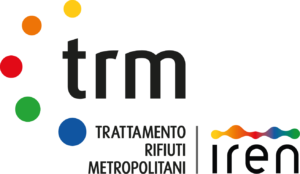28 March 2024
4.8 million tonnes of waste into energy for 4.5 million people
The Turin waste-to-energy plant – one of the national excellences for closing the waste cycle – today celebrates 10 years of operation. Launched in 2013, the plant has processed almost 4,800,000 tonnes of waste, fed 3,000,000 MWh of electricity into the grid, equivalent to that required by almost 1,500,000 three-person households, and, thanks to the production of 300,000 MWh of heat, met the needs of around 22,500 people.
Safety, minimisation of environmental impact and energy recovery are the strengths of the TRM plant, an Iren Group company, which traces a sustainable route, alternative to landfill, through one of the best available technologies. The waste-to-energy plant can reduce the volume of residual waste by 98% compared to landfill.
The plant was conceived and designed to be fully integrated with the local area and community. In this regard, a Local Monitoring Committee was established in 2006, made up of the municipalities involved in the area of influence, which accompanied the planning and implementation activities and, over the past ten years, has continued to promote periodic meetings and discussions with local stakeholders and citizens.
The Turin waste-to-energy plant is also the only plant in Italy to have been designed with a space dedicated to educational activities for schools and specific visit routes. Between 2013 and 2022, 28,000 people visited the waste-to-energy plant, with an average of 4,500 guests in the pre-pandemic years of normal operation. In the first quarter of 2023 alone, more than 1300 visits have already taken place, a sign of a strong recovery.
The architectural project, entrusted to Stile Bertone, reflects a modern and aesthetically pleasing design: an industrial element that has now become an integral part of the area and is able to harmonise aesthetic pleasantness and efficiency.
Alongside transparency, security has always been central to the management of the plant: The plant’s security levels are in fact guaranteed by a surveillance system that monitors the health effects in the surrounding areas, coordinated by leading local and national public institutions and qualified technicians and specialists from Piedmont, supported by contributions from other research centres, local health authorities and universities.
“The waste-to-energy plant represents a particularly virtuous best practice, both in the context of the Iren Group’s activities and at the Italian level, as a plant capable of closing the life cycle of waste,” says Alessandro Battaglino, TRM Chairman . “In a country where the NIMBY effect is the predominant sentiment in politics as well as in public opinion, the waste-to-energy plant is the emblem of success. A state-of-the-art plant that still coexists in harmony with the land precisely because from conception to operation, the population and community have been involved, particularly in activities to ensure the least impact on the environment.
“By recovering the energy contained in the waste, approximately 80,000 tonnes of fossil fuel are saved per year. The waste-to-energy plant is therefore the emblem of a plant that is fully integrated into its surroundings, also from an aesthetic point of view, and that contributes to protecting the environment and generating a sustainable economy,” says Giusi Di Bartolo, TRM CEO . “The advantage of using a waste-to-energy plant is that it transforms non-recyclable waste into clean energy: a sustainable and circular process, an alternative to landfills.
The waste-to-energy plant was also the protagonist of a number of important initiatives carried out together with associations and companies, further confirming the integration of the plant within the territory, and beyond. In 2022, the area was home to 120,000 bees capable of pollinating approximately 60 million flowers in the surrounding area, as through observation of bee behaviour it is possible to ensure further monitoring of the quality of the area and zone.
A model of the waste-to-energy plant was also installed with almost 25,000 LEGO bricks of various sizes and colours, made by Brickvision specialists. The model, 231.5 cm long, 119 cm wide and 70 cm high, represents to scale all parts of the waste-to-energy process: from the waste input to the boilers, from the condensers to the office building.
The 10th anniversary of the Turin waste-to-energy plant was celebrated at the conference “A plant serving the territory: TRM’s first 10 years” , attended not only by the top management of TRM and the Iren Group – Chairman, Luca Dal Fabbro, and CEO, Gianni Vittorio Armani – but also institutional representatives such as Gilberto Pichetto Fratin, Minister for the Environment and Energy Security, Alberto Cirio, President of the Piedmont Region, Matteo Marnati, Councillor for the Environment of the Piedmont Region, Chiara Foglietta, Councilor for the Environment of the City of Turin, and Sonia Cambursano, Councillor of the Metropolitan City of Turin with responsibility for strategic planning.
How does a waste-to-energy plant work?
The TRM plant treats residual municipal solid waste from separate collection and special waste assimilable to municipal waste – in both cases exclusively non-hazardous. The plant has a modern configuration and is characterised by the Best Available Techniques (BAT), by which we mean the best technical plant, management and control solutions.
Thanks to the waste-to-energy process, which takes place at a temperature of over 1000°C, the energy contained in the waste can be recovered, producing electricity and heat. The plant can operate either in a purely electrical or in a cogeneration set-up, i.e. providing both electrical and thermal energy for district heating.
Below you can view the video recounting the event.

